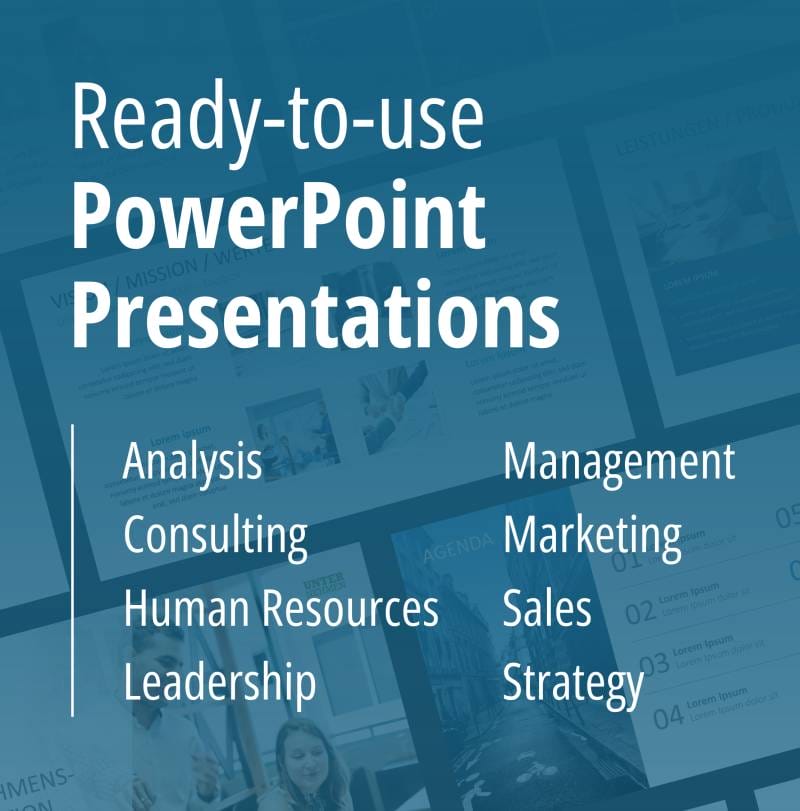
Sell New Products Successfully
It’s not easy selling new and innovative products. Potential customers often shy away from the unknown, particularly in the B2B environment. When there’s no perceived need for a product, consumers often fail to notice, and ultimately reject, innovation.
But how on earth can a small start-up company or an independent entrepreneur find the money for an expensive marketing campaign?
Many companies rely on social media marketing on popular platforms such as Facebook, Instagram and YouTube, especially when their target group is younger people. Search Engine Optimization (SEO) is also proven to work. It takes time before these tools take effect, though. You could use a strategy such as buying “likes” for your company site, but results can take a long time coming, and this is particularly risky for high-priced products and services.
To expand the range of new prospects and grow a market for your new and exciting product, you’re going to have to think outside the box.
1) Know What Your Customers Need
Many companies aiming to sell new products know their customers but fail to use this knowledge when it comes to the crunch.
What sets the most successful companies apart, then? Market leaders tend to be companies that recognize their customers’ needs faster than their competitors and react rapidly and strategically. So it’s essential to research what your customers actually want, monitor the demands of the market, and quickly align what you’re offering to these. The concept of an “Insights Engine” has proved to be very helpful here. Using machine learning and cognitive processing, it can work with unstructured data such as social media content, video, audio etc, delivering results (both content and recommendations) that can be applied throughout the company.
In addition to modern data and information technology, don’t forget to leverage the resource of human creativity within your company. Allow your employees to experiment and discuss and try out new ideas.
A silver tongue doesn’t necessarily cut the mustard in the internet age
Until now, those who were naturally highly persuasive and eloquent had a massive advantage over other salespeople, even if some of what they came out with was bluff unsupported by figures. The balance is shifting, though. Of course, eloquence and persuasiveness still play their part, but you can no longer rely on the customer knowing less than you do.
Potential buyers today research the product, scan your competitors’ offerings, and use comparison sites. It is just so much easier to access information. Gain the trust of your potential business partner by being honest with them and acknowledging their needs. This includes admitting any gaps in your knowledge and staying positive throughout. Pay attention to your body language, introduce yourself personally and maintain eye contact (without staring at the customer!).

2) Generate a Customer Profile
If you’re selling a new product, the Buyer Persona concept could help you with personalized customer communication. This type of customer profile is a semi-fictional description of your ideal customer, compiled from market research and real data.
This allows you to tailor your content more efficiently and adapt to specific customer requirements. For example, it is important to find out what the motivation for buying your product might be, or conversely, what might prevent the customer from buying. This is a great general tool to internalize before meeting with actual prospects.
When speaking with a prospect, try to actively involve them in the conversation and clarify their
situation with open questions. You could, for example, find out what role certain topics such as cost savings or sustainability play for them, inviting a detailed description of their situation. Keep alert during any conversation and clarify possible ambiguities.
Ask yourself:
– What makes your customer tick emotionally?
– What do they really want and need?
– How do they see what you’re offering?
– What can you contribute to your customer’s success and satisfaction?
Stand out from the crowd with a great customer-oriented approach
Marketing and sales presentations are often much too vague. To keep your customer from walking out, you need to emphasize right from the start what makes your company, product or service stand out, ahead of the competition.
What is your unique selling proposition (USP)? Are there particular features that distinguish you from your competitors? Do you specialize in a field or uphold particularly high-quality standards? Even when doing business on a small scale, always emphasize values such as reliability, tradition or excellent service. Give your prospect a motive to get in touch with you before anyone else.

3) Create a New Sales Process
Use open questions to encourage your customer to think about their needs. If you can swing their focus to what they’re missing, they’ll be more receptive to your proposed way of meeting those needs.
One of the biggest difficulties in product presentation is when the customer is satisfied with their current solution and unwilling to buy anything. Open questions are a smart approach, because they create a subtle pressure on the customer to act. If you show them the advantages of your new and innovative product at this point, you have a better chance of interest in your product and eventually a sale. Don’t make an offer too early; use your skills to increase the pressure to act and generate excitement.
4) Great Salespeople Focus on Learning Rather than Performance
New products can require a completely different mindset from your customer. When pitching, it helps to ask your prospect how each aspect of your product or service could benefit them. The aim is for them to imagine making the purchase. Learning new behaviors, though, fuels fears and insecurities. Many people feel comfortable stuck in their old habits, with tried and tested equipment and procedures; the thought of innovation unsettles them.
So it’s really important to train your powers of perception, and to detect and address a prospect’s hidden fears. Whether you’re on the phone or face to face, your tone of voice should always be attentive and positive. You need to refute all their doubts with credible testimonials. You could, for example, include particularly expressive images or delighted customer feedback in your PowerPoint presentation.
In principle, every sales talk is also a valuable learning experience for you. Even if the customer chooses not to buy the new product, you can learn from this. Ask yourself what went particularly well this time and what you can change or improve at the next meeting. Where’s the potential for development? Why might the customer have rejected your offer? Why did the buyer say they loved your product but bought elsewhere? What can you learn for the future?
Visualize the benefits of your product / services
For your customer to enthusiastically take up a new product, they need be able to mentally imagine it in action. Address all the customer’s senses. Vivid colours and images arouse emotions and stimulate the imagination. Convince the customer that the new purchase will increase their well-being. With some products, such as a massage chair, this is certainly an easy task, as the customer will have a concrete idea of the wellness effect.
However, you can also package more abstract topics, such as thermal insulation, in a vivid way, albeit without using overly flowery language. It is important to give the customer concrete details of the most important advantages. Take the prospect on a mental journey – through the experiences of other customers or through glowing testimonials – so that they can properly imagine using the new product.
If possible, let the customer experience the advantages of the product with as many of the senses (smell, taste, sight, hearing, touch) as possible. This makes it all the easier to identify with it in everyday life. A sensory experience will always be remembered better than information conveyed in a cool and abstract way.
Rational decisions are triggered by sensory experiences
Although it may sound weird at first, there is a definite connection between our sensory perceptions and rational decisions. A customer only reacts when their feelings are triggered. It doesn’t matter whether the feelings are of joy or of possible total loss; you can leverage either to make a sale.
Remember that your customer wants to be “persuaded” by you to a certain extent. Even if they are hostile towards you at first, this doesn’t necessarily mean that they won’t buy. Be patient and don’t give up immediately. You might find that the customer has certain prejudices, or has been negatively influenced by friends and family or the media. Be open and understanding, but remember to consistently stick to the actual topic.
Remember:
Purchase decisions are made based on feelings.
5) Present Benefits and Testimonials Upfront
In your product presentation, it pays to describe the product briefly, then focus on its benefits. Underline your PowerPoint presentation with great testimonials testifying to successful use of the product or service.
Narrow your focus to one or two examples and keep things as short and clear as possible. Your customer will only consider the new product if they can see a practical benefit and the price seems justified. It helps to have the freedom to adjust your prices flexibly.
If possible, offer varied price schedules. So maybe your standard price for work on a fixed date, and then discount for various circumstances, such as flexible timing or bulk purchase. You can offer a special price if the customer pays within a certain period. A phrase such as “The price is in your hands” will arouse your prospect’s curiosity and is sure to be remembered.
Whatever the price you agree, don’t aim for high quality in fulfilling the order.
This means:
- Fulfil the order punctually and reliably
- Ensure excellent quality
- Keep your promises
- Make credible statements so as not to jeopardize the trust the customer has in you.
Give the customer the feeling that they are actively participating in the process
Most people like to be control of their life. If you want to sell a garden hot tub, for example, the benefits and advantages are obvious: the purchaser can actively participate in the design of their individual product via size, design and choice of accessories. A product that is tailored to the customer’s personal taste and emphasizes their individuality is always much more attractive than an off-the-shelf product.
Offer a free short consultation
One of the most important aspects of sales is establishing first contact with the customer. If you are a coach, for example, you could offer a free, non-binding consultation lasting 15 to 20 minutes. Your potential customer can then take their time to get an idea of what you have to offer. This also applies to other products and services, of course. Being allowed to try something for free is a great incentive, making the customer feel good (we all love a bargain!). Don’t hesitate to offer a test drive or free samples.
6) Create a Great Business Environment
Instead of just focusing on training your employees in hard selling, look at the entire culture of your company. An agile corporate culture really contributes to the success of your organization. Train your employees to deal with potential customers in all situations.
If you own a café, for example, regular customers should be given a warm welcome. No-one wants to hear employees gossiping loudly and ignoring their clientele. The focus here should be on good but discreet service, so that the customer feels taken seriously and feels welcome.
So many elements go into making a corporate culture. These include behaviors and rules, symbols, and a good working environment. The way power and responsibility are distributed also plays a decisive role. And none of this is important if you haven’t sorted out how to communicate well between different individuals and departments.

Spend time on after sales service
Don’t assume that your work is finished once the sale is made. Try to get in touch with the customer again as soon as possible (perhaps three days later – don’t wait too long!) It won’t come across as pushy to ask whether the sale has gone through smoothly or if they have any questions.
Once the sale is complete, it pays to thank your customer and express your appreciation for the trust they have placed in you. This helps create fertile ground for the customer to recommend you to friends and family and to continue purchasing from you in the future.




